Fashion
Balenciaga Destroyed Crewneck Sweater
Get yours here! Cheap!
Posted By: Paul - Fri Apr 29, 2022 -
Comments (3)
Category: Antisocial Activities, Design and Designers, Excess, Overkill, Hyperbole and Too Much Is Not Enough, Fashion, Frauds, Cons and Scams, More Money Than Brains
Ancient Greek Warrior Sunglasses

NY Daily News - July 25, 1971
For comparison, the helmet of an ancient Greek warrior:

Posted By: Alex - Sat Apr 02, 2022 -
Comments (0)
Category: Fashion, 1970s, Eyes and Vision
Follies of the Madmen #528
Our shirts will enable you to join the cast of Jackass.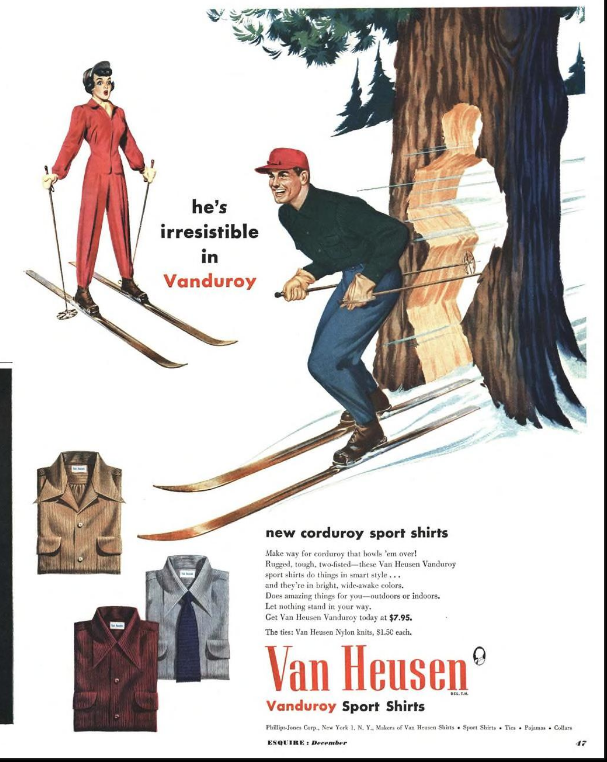
Posted By: Paul - Sun Mar 27, 2022 -
Comments (2)
Category: Fashion, Stupid and/or Dangerous Products, Advertising, 1950s
Spoon bracelet fad alarms cafeterias
Spoon bending, pre-Uri Geller.
Des Moines Register - Oct 15, 1939

Hastings Morning Spotlight - Dec 27, 1938
Posted By: Alex - Sun Mar 20, 2022 -
Comments (2)
Category: Fads, Fashion, 1930s
Hairdresser in a glass coffin
Celebrity hairstylist Antoine de Paris used to sleep in a glass coffin, which he claimed he would one day be buried in. He died in 1976, and whether he actually was buried in the glass coffin I haven't been able to find out.Info from Logan Sisley:
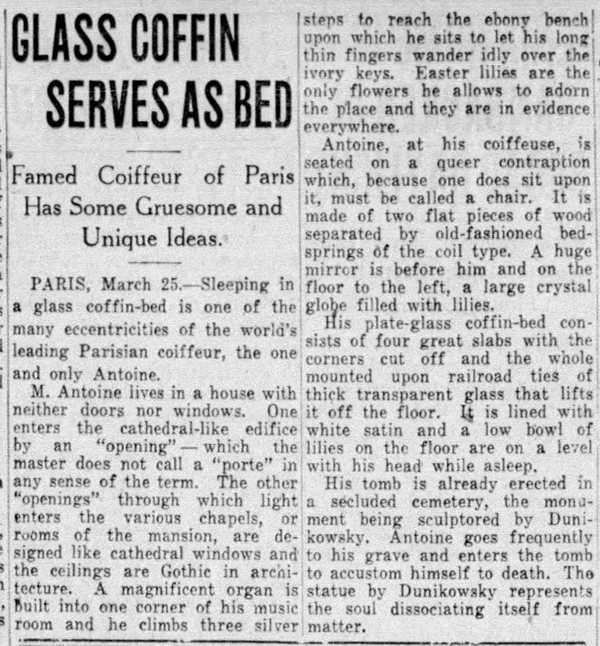
Dayton Daily News - Mar 25, 1932
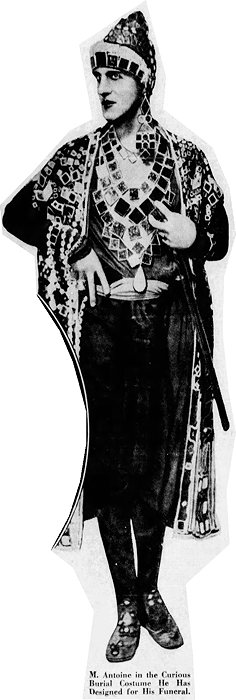
"M. Antoine in the curious burial costume he has designed for his funeral"
From The San Francisco Examiner - Sep 25, 1932:
But models die, get married, get fired, while Antoine continues to live. Always he must be replacing the original ones. He picks them out for their gaiety and their good looks.
More info: Polish Fashion Stories
Posted By: Alex - Tue Mar 15, 2022 -
Comments (4)
Category: Death, Fashion, Furniture
Kinetic Dress
Modeled recently at London Fashion Week.More info: Jack Irving on Instagram
Kinetic dress by Jack Irving pic.twitter.com/68JdOpDaqU
— fashion (@factoryyouth_) February 23, 2022
Posted By: Alex - Wed Mar 09, 2022 -
Comments (4)
Category: Fashion
Existential Tattoos
I think that in the 1950s anything slightly non-conformist was labelled 'existentialist'.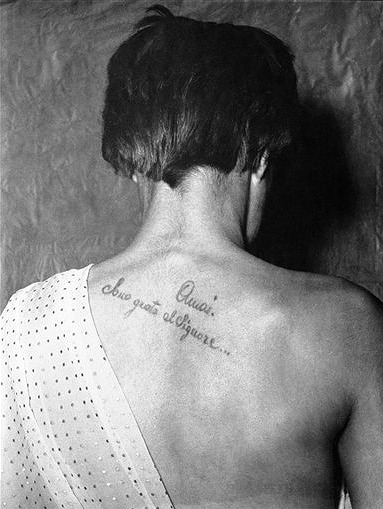
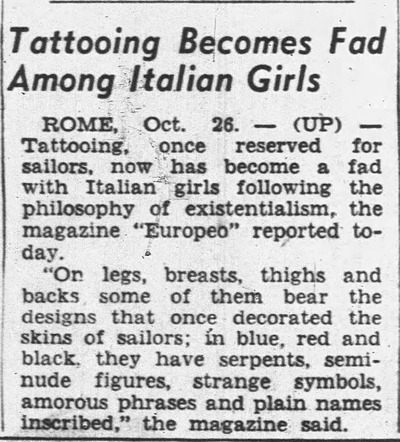
Wichita Eagle - Oct 27, 1952
Anyone with an existential tattoo should make sure to also wear an existentialist hat.
Posted By: Alex - Tue Mar 08, 2022 -
Comments (0)
Category: Fashion, Philosophy, 1950s, Tattoos
Bird-Cage Earrings Containing Live Birds
Worn by actress Shary Marshall - Apr 1967. Designed by Lynda Bird Johnson, daughter of President Johnson. The cages contained Australian Snow Finches.
The Orlando Sentinel - Apr 1, 1967
They would pair well with this bird hat that we've previously posted about (worn by actress Jane Bough in 1968).

Posted By: Alex - Wed Feb 23, 2022 -
Comments (3)
Category: Fashion, Headgear, 1960s
Wong Tai Tung’s Metal Brassiere
In 1968, the British Patent Office granted Wong Tai Tung of Hong Kong Patent No. 1,105,147 for "Improvements in or relating to Brassiere Garments". From his patent:It is the most important point for women to have decorated brassiere garments to enhance the beauty of the bosom.
In order to meet with their requirement, I have invented a decorative metal brassiere garment. It makes the bosom appear bigger because of the twingle and sparking light of ornaments of gems and pearls on the garment.
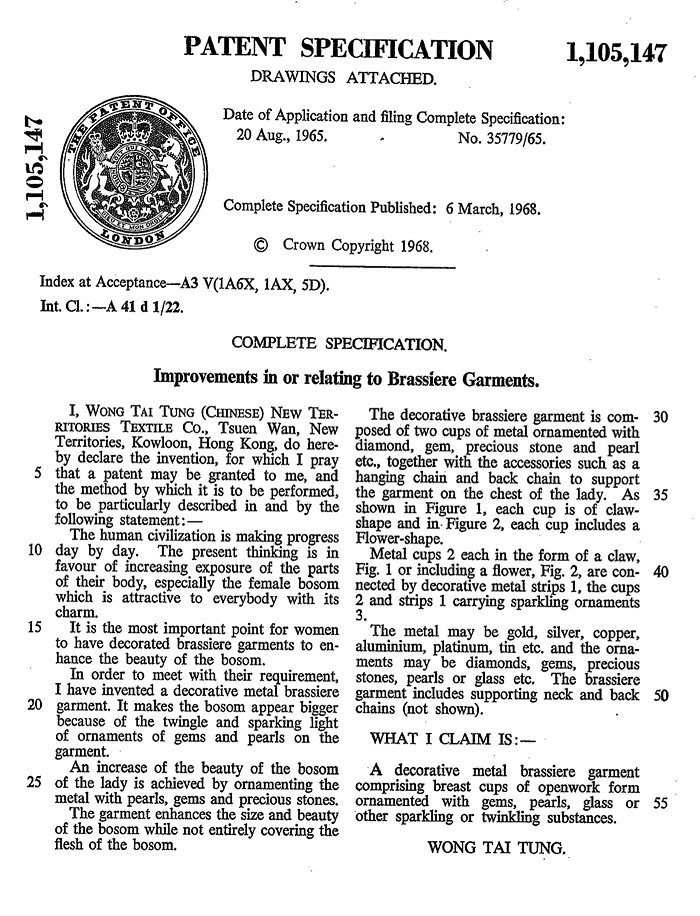
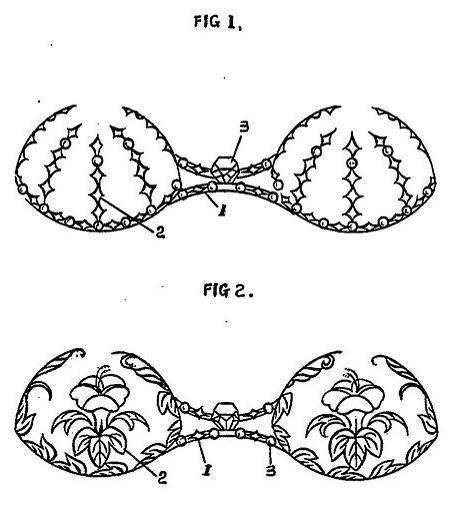
Posted By: Alex - Mon Feb 14, 2022 -
Comments (6)
Category: Fashion, Underwear, Patents, 1960s
Pneumonia Blouse
In the early twentieth century, women began wearing low-necked, gauzy blouses. Conservative critics branded them "pneumonia blouses" — warning that they would cause the women wearing them to catch pneumonia.More info: Jonathan Walford's blog
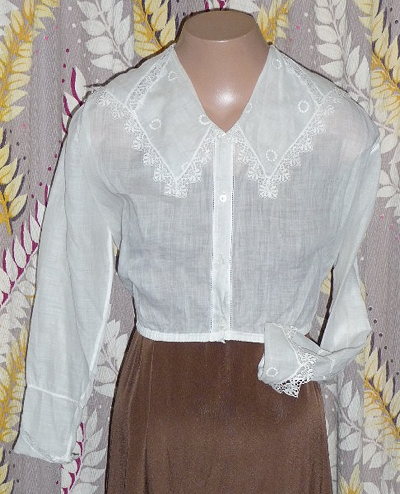
Example of a pneumonia blouse
Source: Holly Vogue Vintage
I often see young women out and about, dressed completely inappropriately for the cold weather, suffering for the sake of fashion. So the spirit of the pneumonia blouse seems to be alive and well, if not the specific style.
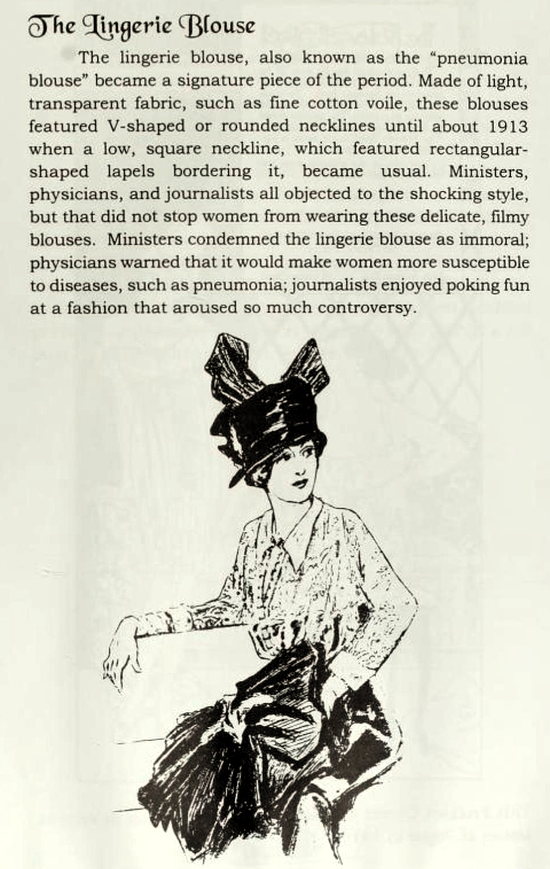
Victorian to Vamp: Women's Clothing 1900-1929, by Paula Jean Darnell
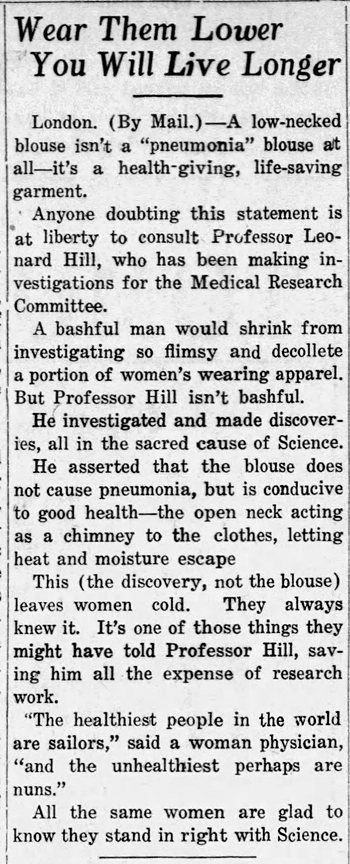
University Daily Kansan - Mar 18, 1920
Posted By: Alex - Sat Feb 05, 2022 -
Comments (3)
Category: Fashion, Health, 1900s

| Who We Are |
|---|
| Alex Boese Alex is the creator and curator of the Museum of Hoaxes. He's also the author of various weird, non-fiction, science-themed books such as Elephants on Acid and Psychedelic Apes. Paul Di Filippo Paul has been paid to put weird ideas into fictional form for over thirty years, in his career as a noted science fiction writer. He has recently begun blogging on many curious topics with three fellow writers at The Inferior 4+1. Contact Us |




